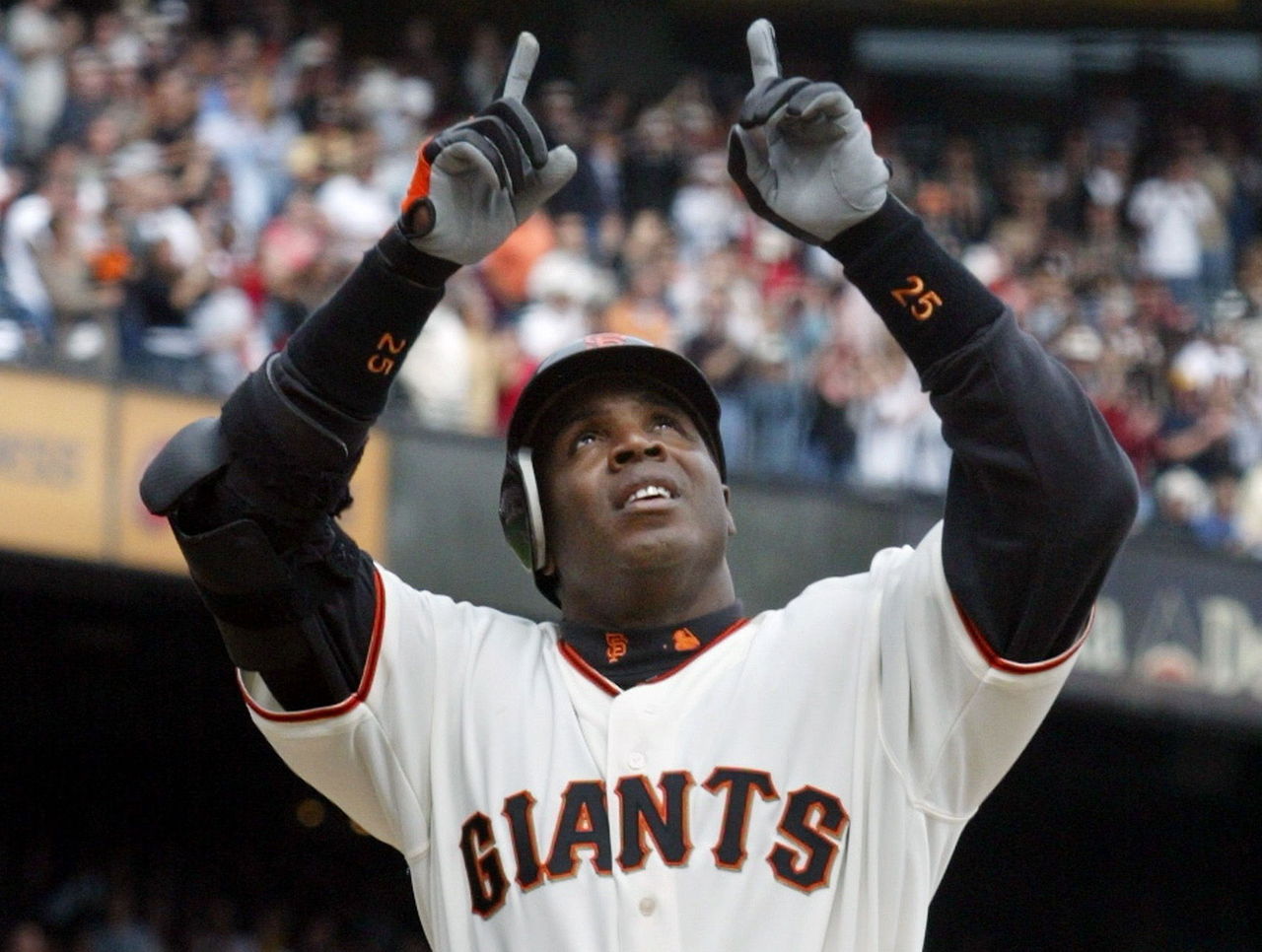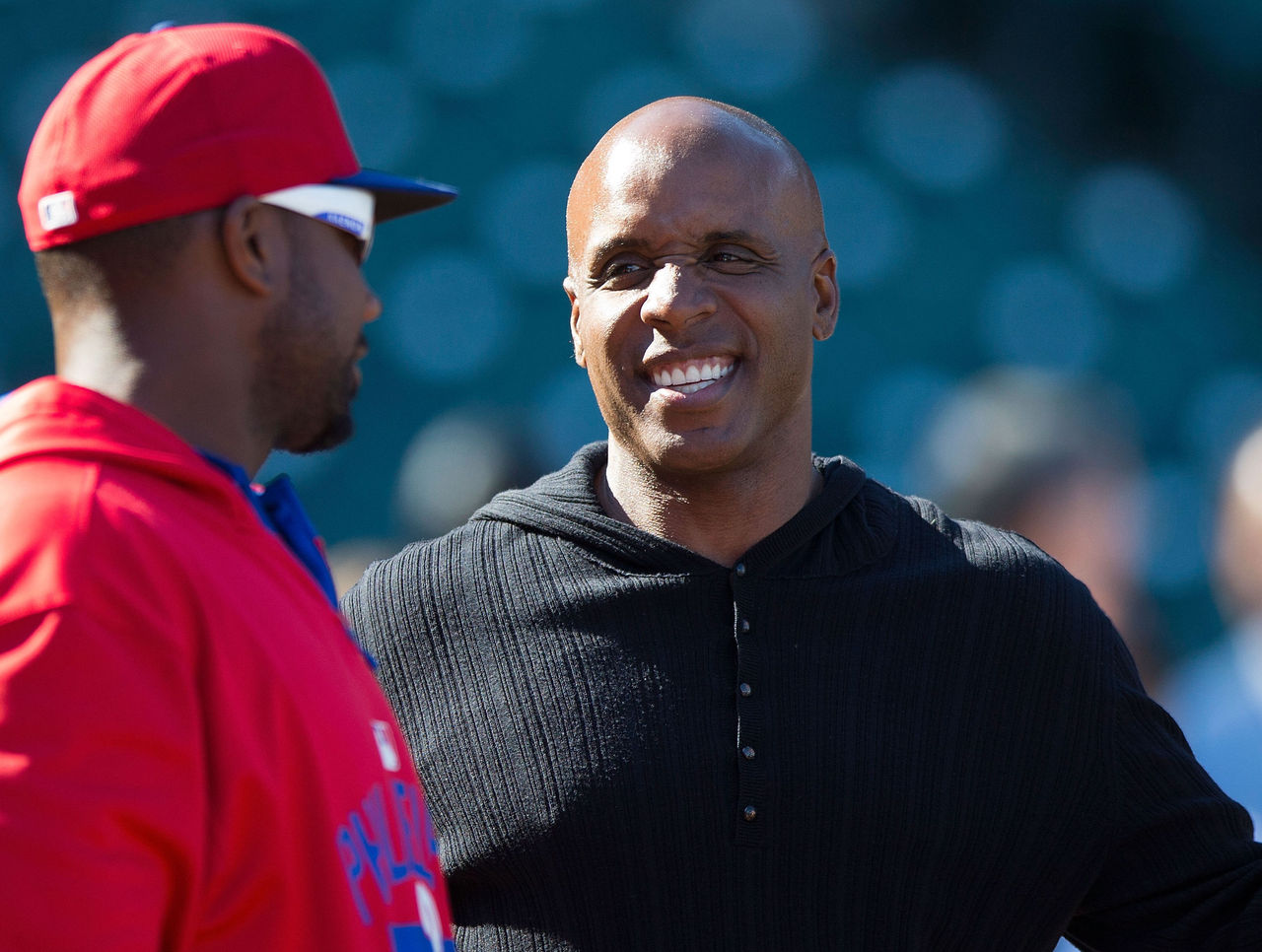What would Barry Bonds make as a free agent in 2016?
On Feb. 15, 2007, Barry Bonds finalized a one-year, $15.8-million contract with the San Francisco Giants. Roughly seven months later, after another productive season from the then 43-year-old, the Giants decided to end their 15-year relationship with their polarizing icon whose otherworldly home runs, ungoverned by the laws of physics, made San Francisco the team to watch throughout the early aughts.
It wasn't exactly a mutual breakup, and the greatest player ever to pull on a Giants uniform - any uniform, really - was cast out into the free-agency wilderness. He never signed another contract. For the better part of the next decade, the all-time home run king was sent into baseball exile amid ceaseless legal problems. He resurfaced only a few months ago when Jeffrey Loria, the Miami Marlins' pejorative-inspiring owner, decided to hire Bonds as his team's hitting coach after the former slugger's obstruction of justice conviction was thrown out by a federal appeals court.
Bonds' inability to land a contract after 2007 deprived him the opportunity to append his sparkling resume, and while he accrued more than $188 million playing Major League Baseball, the potential earnings he lost aren't insignificant. His ignominious exit from baseball was disheartening enough without considering the financial implications, but it's fun to consider what Bonds, in his various iterations, would've commanded on the open market in 2016 - with wins costing far more than when he last stepped into the batter's box.
So, how much would it cost, in 2016, to employ the man who once did this? And this? And this? Let's take a look.
Prime-era Bonds
Firstly, the notion that teams are reluctant to give long-term deals to older players is probably overstated. In 2014, despite exhibiting obvious symptoms of decline the season prior, Carlos Beltran landed a three-year, $45-million deal from the Yankees just months before his 37th birthday. Last winter, Victor Martinez - a 37-year-old without a position - commanded a four-year, $68-million extension from the Tigers following a campaign in which he posted an OPS 140 points above his career mark.
Imagine if Bonds were to become a free agent in baseball's current economic landscape following his mind-boggling age-39 season. At that point, Bonds was coming off a four-year stretch in which he hit .349/.559/.809 (256 OPS+) and, not surprisingly, added another four National League MVP awards to his obscenely crowded mantle.
| Year (Age) | WAR | wRC+ | OBP | HR | BB% |
|---|---|---|---|---|---|
| 2001 (36) | 12.5 | 235 | .515 | 73 | 26.7% |
| 2002 (37) | 12.7 | 244 | .582 | 46 | 32.4% |
| 2003 (38) | 10.2 | 212 | .529 | 45 | 26.9% |
| 2004 (39) | 11.9 | 233 | .609 | 45 | 37.6% |
| 4-year avg | 11.8 | 231 | .559 | 52 | 30.9% |
In this hypothetical, nobody knows how Bonds is going to age, but even with a dramatic, linear decline of 3 WAR per season, he probably won't land a contract commensurate to the on-field value he'll provide through his early forties. With a reasonable expectation of continued inflation, along with his age and the numbers he produced in the four years prior to reaching free agency, Bonds is both too good and too old for teams to pay him what he'd probably be worth in the 2016 baseball economy.
| Year (Age) | WAR | $/WAR | Est. Value |
|---|---|---|---|
| 2016 (40) | 8.8 | $8M | $70M |
| 2017 (41) | 5.8 | $8.4M | $49M |
| 2018 (42) | 2.8 | $8.8M | $25M |
| Totals | 17.4 | $144M |
With the possible exception of Mike Ilitch, what owner would be comfortable investing more than $140 million in a player with that kind of mileage? What general manager would feel confident even asking ownership for that kind of money to sign a quadragenarian (especially one as hampered by off-field issues as Bonds)? The answer, in Bonds' case, isn't "none," but it's fair to presume his market would be mostly limited to AL teams, particularly those that can assume some financial risk. A two-year deal with an absurd, unprecedented annual average value is pretty much guaranteed - the dude hit 45 homers with a .609(!) OBP the season prior - but some team (I'm looking at you, Yankees) would probably be willing to give him a third year.
Final verdict: Three years, $110 million

43-year-old Bonds
As it turns out, Bonds accrued only 7.1 WAR following that four-year stretch, missing virtually all of his age-40 season due to injury before spending his final two years in the majors reconciling his superb-but-no-longer-sublime offense with some appalling work in left field. Good thing nobody gave him $110 million for that.
| Year (Age) | WAR | wRC+ | OBP | HR | BB% |
|---|---|---|---|---|---|
| 2005 (40) | 0.7 | 162 | .404 | 5 | 17.3% |
| 2006 (41) | 3.2 | 146 | .454 | 26 | 23.3% |
| 2007 (42) | 3.2 | 157 | .480 | 28 | 27.7% |
Still, though no team was willing to take a chance on Bonds after his age-42 campaign - he only led the National League in OBP (.480) and finished eighth in isolated power (.288) that year, after all - let's imagine he were to hit the 2016 market following that "final" season.
At this point, the only position he can really play is designated hitter. His durability has tailed off, too. Though he continues to walk more than any player in baseball, he's no longer a candidate to win a batting title, and his power isn't quite as spectacular as it once was. Despite his decline, Bonds' numbers throughout the final stage of his career possess some striking similarities to those of a contemporary slugger poised to take his last hacks in 2016.
| Player (Age) | WAR | wRC+ | HR | ISO | BB/K |
|---|---|---|---|---|---|
| Barry Bonds (40-42) | 7.1 | 152 | 59 | .287 | 2.31 |
| David Ortiz (37-39) | 8.4 | 141 | 102 | .263 | 0.82 |
Ortiz, who turned 40 in November, will make $16 million this year. Alex Rodriguez, another surprisingly productive human antique, will make $21 million in 2016 as the Yankees' primary DH. Bonds, in this hypothetical, is a bit older than both players, but he's also coming off a season in which he shattered Carlton Fisk's record for OPS+ (134) by a 42-year-old (min. 400 plate appearances). With four AL teams receiving below-average offensive production from their designated hitters in 2015, Bonds would almost certainly land a lucrative one-year deal for his services.
Final verdict: One year, $20 million

Present-day Bonds
Not including the wonderful anomaly that is Julio Franco, no player in the live-ball era has logged more than 115 plate appearances after turning 46. Bonds, at this moment, is seven months removed from his 51st birthday. Were he to return to a 25-man roster now, it'd be nothing short of a miracle, but, then again, most everything about Barry Bonds is miraculous. Taking into account his preternatural abilities, then, let's generously project only a four percent decline across the board for each year he's been absent from the game.
| Year (Age) | OPS | OBP | ISO | BB% |
|---|---|---|---|---|
| 2007 (42) | 1.045 | .480 | .288 | 27.5% |
| 9 x 4% = -36% | ||||
| 2016 (51) | .669 | .307 | .184 | 17.7% |
Amazingly, two AL clubs received a lower OPS from the DH spot last season than Bonds' (crudely) projected .669 mark, though Fangraphs' Steamer system doesn't expect any regular designated hitters to be worse than that in 2016. All of Bonds' value, at this point, boils down to walks and the occasional home run, and he won't offer enough on-field value to justify his above-replacement-level acquisition cost, but it's hard to ignore all the opportunities to monetize employing Barry Bonds at 51 years old. No team store would be able to keep his jersey on the shelf. Fans would flock to the ballpark early to watch him take batting practice. Though his teammates may resent him, Bonds, at 51, would still put butts in the seats.
Final verdict: One year, $1 million + $250,000 bonuses for plate appearance milestones (100, 250, 500, 600).